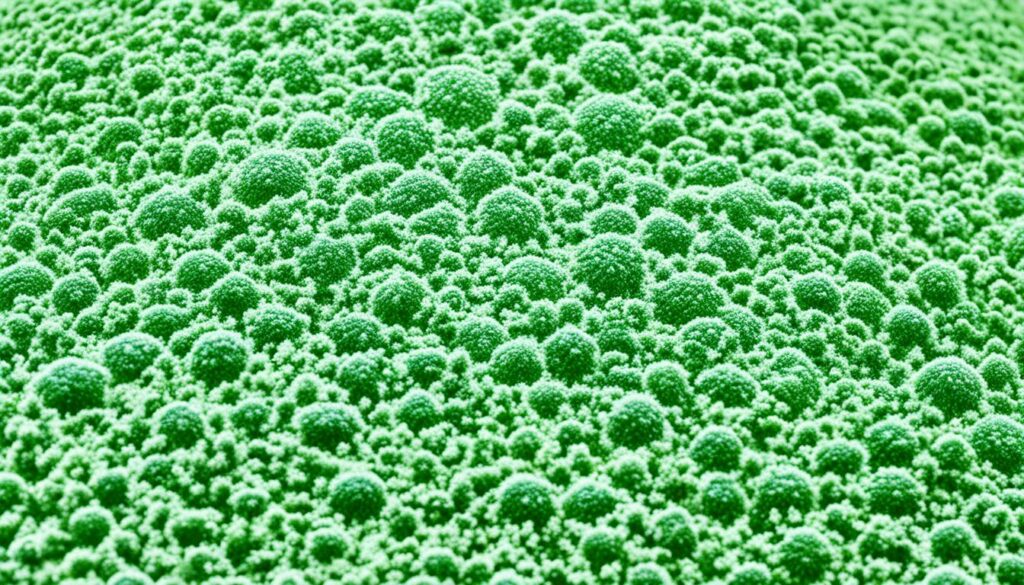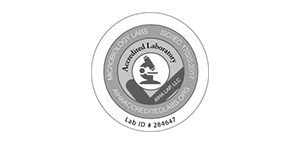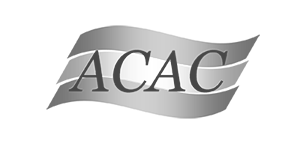
Rapid Mold Growth Explained: What to Know
Discovering mold growth in your home can be a concerning and potentially hazardous issue. Understanding how quickly mold can spread and the factors that contribute to its growth is essential for effective remediation and prevention. In this article, we will explore the speed at which mold can spread and provide important insights into dealing with mold growth.
Before delving into the specifics of mold growth speed, it’s crucial to have a solid understanding of what mold is and how it grows. By exploring the mold growth process, we can better grasp the factors that impact its proliferation and take appropriate measures to address the issue.
Factors such as humidity levels, temperature, moisture sources, and the presence of organic material can significantly influence the rate at which mold spreads. By identifying these factors, you can take proactive steps to control and prevent mold growth in your home.
So, how quickly does mold spread? The rate of mold growth can vary depending on various circumstances. By examining typical time frames for mold growth in different conditions and environments, you can gain insights into the urgency of addressing mold issues in your home.
Rapid mold growth poses several dangers, both to your health and the structural integrity of your home. Understanding the potential hazards associated with mold, including respiratory issues, allergies, and property damage, emphasizes the importance of timely intervention.
Recognizing the signs of mold growth is crucial for effective remediation. By being able to identify common indicators such as visual cues, musty odors, and physical symptoms, you can take prompt action and prevent further damage to your health and property.
To address and prevent mold growth, implementing proactive measures is key. Regular inspections, moisture control, proper ventilation, and mold remediation techniques can help mitigate mold issues and safeguard your living environment.
In conclusion, understanding the speed at which mold can spread empowers you to take the necessary steps to combat mold growth effectively. By staying vigilant, recognizing the signs, and acting promptly, you can ensure a safe and healthy home for you and your loved ones.
Understanding Mold and Its Growth Process
Before diving into the speed of mold growth, it is essential to understand the basics of mold and how it grows. Mold is a type of fungus that thrives in warm, damp environments. It reproduces by releasing spores into the air, which can then settle and multiply in the right conditions.
To better understand the mold growth process, let’s take a closer look at the key factors that contribute to its development:
1. Moisture
Moisture is the primary factor that fuels mold growth. Mold requires a source of moisture to thrive and reproduce, such as water leaks, condensation, or high humidity levels. When these conditions are present, mold spores that are naturally present in the air can settle on damp surfaces and begin to grow.
2. Organic Material
Mold feeds on organic materials such as wood, paper, fabric, and even dust. These materials provide mold with the nutrients it needs to grow and spread. When mold spores land on these surfaces, they can start breaking down the organic matter, leading to further mold growth.
3. Temperature
Mold tends to grow best in temperatures between 77°F (25°C) and 86°F (30°C). However, it can still develop and spread at lower or higher temperatures, albeit at a slower pace. The temperature range also influences the speed at which mold colonies expand, with warmer temperatures typically accelerating the growth process.
Understanding these fundamental aspects of mold growth can help you take proactive measures to prevent its development. By addressing moisture issues, controlling humidity levels, and promptly addressing any signs of mold growth, you can effectively minimize the risk of mold infestation in your home.
| Conditions | Optimal Temperature |
|---|---|
| High humidity | 77°F (25°C) – 86°F (30°C) |
| Low humidity | Below 77°F (25°C) |
| Extreme humidity | Above 86°F (30°C) |
Factors Affecting Mold Growth Speed
Mold growth can be influenced by various factors that determine its speed of spread. Understanding these factors is crucial for effectively managing and preventing mold growth in your home.
Humidity levels: High humidity creates a favorable environment for mold to thrive. Moisture encourages mold spores to germinate and multiply rapidly. Monitoring and controlling indoor humidity levels below 50% can help inhibit mold growth.
Temperature: Mold grows best in moderate temperatures between 70 and 90 degrees Fahrenheit (21-32 degrees Celsius). Warmer temperatures accelerate mold growth, while colder temperatures can slow it down. Proper temperature control can help manage mold growth.
Moisture sources: Mold requires a source of moisture to grow and spread. Common moisture sources include leaks, condensation, and water damage. Identifying and addressing these sources promptly can prevent mold growth or halt its progression.
Presence of organic material: Mold feeds on organic materials like wood, paper, carpet, and fabric. The availability of such materials provides nutrients for mold to grow and proliferate. Regular cleaning and maintenance can help eliminate potential food sources for mold.
To gain a better understanding of how these factors interplay, refer to the table below:
| Factors Affecting Mold Growth Speed | Impact on Mold Growth |
|---|---|
| High Humidity Levels | Accelerates mold growth |
| Temperature | Ideal range: 70-90°F (21-32°C) for optimal growth |
| Moisture Sources | Provides necessary moisture for mold growth |
| Presence of Organic Material | Provides nutrients for mold growth |
By considering these factors and implementing proactive measures to control them, you can effectively prevent and manage mold growth in your home. In the next section, we will explore the average rate at which mold spreads in different scenarios.
How Quickly Does Mold Spread?
When it comes to dealing with mold growth, one of the key concerns many homeowners have is how quickly it can spread throughout their spaces. The speed at which mold spreads can vary depending on several factors, such as humidity levels, temperature, moisture sources, and the presence of organic material.
In general, mold can start growing within 24 to 48 hours of the ideal conditions being present. These ideal conditions typically include a warm and moist environment, which provides the perfect breeding ground for mold spores to thrive. Once the spores are present and find suitable surfaces to attach to, they can quickly multiply and create visible mold colonies.
The rate at which mold spreads also depends on the type of mold present. Different mold species have varying growth patterns and reproductive capabilities. Some molds can spread more rapidly than others, especially under favorable conditions.
To give you a better understanding, let’s look at a few examples of how quickly mold can spread in different scenarios:
- In a bathroom with high humidity and water leaks: Mold can start to appear on walls, tiles, or grout within just a few days.
- In a damp basement with poor ventilation: Mold growth can become visible on surfaces within a week or two.
- In a flooded area that hasn’t been properly dried: Mold can begin to colonize within 24-48 hours and spread rapidly, posing significant risks to both health and property.
It’s important to note that mold growth is not always visible, especially in hidden areas like behind walls or under carpets. This hidden mold can still contribute to indoor air quality issues and affect the health of occupants.
To prevent the rapid spread of mold, it’s crucial to address any signs of moisture or water damage promptly. This includes fixing plumbing leaks, improving ventilation in damp areas, and ensuring proper airflow throughout your home. Regular inspections and maintenance can help detect and address mold issues before they become extensive and more challenging to remediate.
The Dangers of Rapid Mold Growth
Rapid mold growth in your home can lead to significant dangers that jeopardize both your health and the structural integrity of your property. Understanding and addressing these risks promptly is crucial to maintaining a safe living environment.
Respiratory Issues: Mold releases spores into the air, which can trigger respiratory problems in individuals. Prolonged exposure to mold spores may cause coughing, wheezing, throat irritation, and exacerbated asthma symptoms.
Allergies: Mold is a common allergen and can cause allergic reactions in susceptible individuals. Symptoms may include sneezing, itchy eyes, runny nose, and skin rashes. If you or your family members experience allergy-like symptoms that persist indoors but improve when away from home, it could be an indication of mold presence.
Property Damage: Mold growth can lead to structural damage to your home. It can weaken walls, ceilings, and floors, compromising their integrity. Additionally, mold can cause discoloration, warping, and decay of building materials, resulting in costly repairs and reduced property value.
To visually illustrate the extent of the dangers associated with mold growth, refer to the table below depicting typical health risks and property damage caused by mold:
| Health Risks | Property Damage |
|---|---|
| Respiratory issues | Weakening of structural components |
| Allergic reactions | Discoloration and decay of building materials |
| Exacerbation of asthma symptoms | |
It is important to take immediate action when any signs of mold growth are present to mitigate the risks it poses to both your health and property.
Identifying Signs of Mold Growth
To effectively combat mold, it is crucial to be able to recognize its presence. By understanding the signs and indicators of mold growth in your home, you can take prompt action to address the issue and protect your health and property. Here are some common signs to look out for:
- Visual cues: Visible mold growth is a strong indication that mold is present. Keep an eye out for patches of discoloration or fuzzy growth on walls, ceilings, floors, and other surfaces.
- Musty odors: Mold often produces a distinct musty smell. If you notice an unpleasant odor that lingers even after cleaning, it could be a sign of hidden mold in your home.
- Physical symptoms: Mold exposure can cause various health issues. If you or your family members experience persistent coughing, sneezing, itchy eyes, or respiratory problems, it could be related to mold growth.
It’s important to note that mold can thrive in hidden areas such as behind walls, under carpets, or in poorly ventilated spaces. Therefore, it’s crucial to be vigilant and address any signs of mold growth promptly.
Addressing and Preventing Mold Growth
Taking proactive measures to address and prevent mold growth in your home is crucial. By implementing effective strategies and following essential tips, you can combat mold issues and create a healthier living environment for you and your family.
To begin, regular inspections play a vital role in identifying early signs of mold growth. Conduct thorough checks in areas prone to moisture, such as bathrooms, kitchens, and basements. Look for visible mold growth, water stains, or musty odors, as these can indicate potential mold infestations.
Proper moisture control is key to preventing mold growth. Identify and address any sources of moisture like leaks, condensation, or high humidity levels. Repair leaks promptly and ensure good ventilation in areas with high moisture, such as bathrooms and laundry rooms. Using dehumidifiers can also help maintain optimal humidity levels in your home.
Effective ventilation is another crucial aspect of mold prevention. Ensure that the airflow in your home is adequate, especially in areas prone to dampness. Use exhaust fans in bathrooms and kitchens to reduce moisture buildup. Opening windows periodically to allow fresh air to circulate can also help prevent mold growth.
If you discover mold growth in your home, it’s important to take immediate action to prevent further spread. Mold remediation techniques can vary depending on the extent of the infestation. For small areas of mold growth, you can clean the affected surfaces using a mixture of water and detergent. However, for larger or more severe infestations, it’s best to hire professional mold remediation services to ensure safe and thorough removal.
Remember, preventing mold growth requires a proactive approach. By incorporating regular inspections, moisture control, proper ventilation, and appropriate remediation techniques, you can effectively address mold issues and create a healthy living environment.
Conclusion
In conclusion, it is crucial to understand the speed at which mold can spread in order to maintain a safe and healthy living environment. By being aware of the factors that contribute to mold growth, recognizing the signs early on, and taking prompt action, you can effectively address mold issues and prevent further damage to your home and well-being.
Mold growth can be influenced by factors such as humidity levels, temperature, moisture sources, and the presence of organic material. By controlling these factors and implementing preventive measures like regular inspections, moisture control, proper ventilation, and mold remediation techniques, you can minimize the risk of mold growth in your home.
Rapid mold growth can have serious consequences, including health risks such as respiratory issues and allergies, as well as structural damage to your property. Therefore, it is essential to stay vigilant and take immediate action if you notice any signs of mold growth, such as visual cues, musty odors, or mold-related health symptoms.
By prioritizing mold prevention and addressing any mold issues promptly, you can create a healthier living environment and protect the well-being of you and your family. Remember, early detection and intervention are key to mitigating the negative effects of mold growth and ensuring the long-term safety and structural integrity of your home.
FAQ
How quickly does mold spread?
Mold can start to spread within 24 to 48 hours in the right conditions. However, the rate of mold growth can vary depending on factors such as humidity levels, temperature, and the presence of moisture sources and organic material.
What is mold and how does it grow?
Mold is a type of fungus that thrives in moist environments. It reproduces by releasing spores that can travel through the air. To grow, mold requires a food source, moisture, and the right temperature. It can grow on various surfaces, including walls, ceilings, carpets, and furniture.
What factors affect the speed of mold growth?
Several factors can affect the speed of mold growth. These include high humidity levels, warm temperatures (between 77°F and 86°F), the presence of moisture sources (such as leaks or condensation), and the availability of organic material (such as paper, wood, or fabric) that mold can feed on.
How quickly can mold spread in different scenarios?
The rate at which mold spreads can vary depending on the conditions and environment. In ideal conditions, such as a damp and warm area, mold can spread rapidly, covering an area of several square feet within a few days or weeks. However, in less favorable conditions, such as a drier or colder environment, mold growth may be slower.
What are the dangers of rapid mold growth?
Rapid mold growth can pose significant health risks and cause structural damage to your home. Exposure to mold spores can trigger allergies, respiratory issues, and asthma attacks. Prolonged exposure to mold can also lead to more severe health problems. Additionally, mold can weaken the structure of your home and cause damage to walls, floors, and other surfaces.
What are the common signs of mold growth?
There are several signs that indicate the presence of mold growth in your home. These include visible mold growth on surfaces, a musty odor, water stains or discoloration on walls or ceilings, peeling paint or wallpaper, and the presence of mold-related health symptoms such as coughing, sneezing, or skin irritation.
How can I address and prevent mold growth?
To address and prevent mold growth, it is important to control moisture levels in your home. This can be done by fixing any leaks or water issues promptly, ensuring proper ventilation in areas prone to humidity, using dehumidifiers, and keeping indoor humidity levels below 50%. Regular inspections and maintenance can also help identify and address moisture problems early on. If mold growth is already present, professional mold remediation may be necessary.
What should I do if I suspect mold growth in my home?
If you suspect mold growth in your home, it is best to take prompt action. Start by identifying and addressing the source of moisture or humidity. You can then consider contacting a professional mold inspector to assess the extent of the mold problem and recommend appropriate remediation measures. It is important to avoid disturbing the mold or attempting to remove it yourself, as this can release mold spores into the air and potentially worsen the situation.







